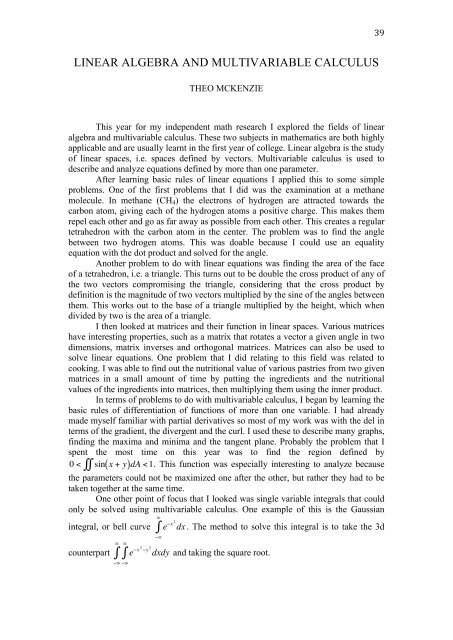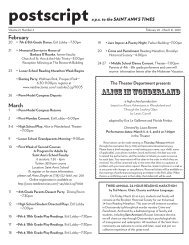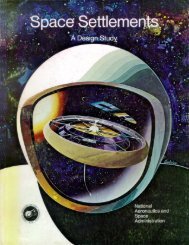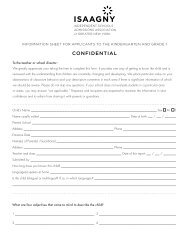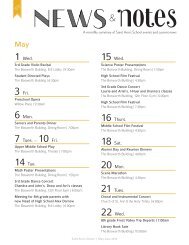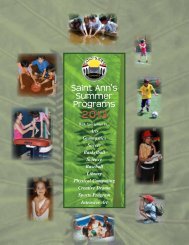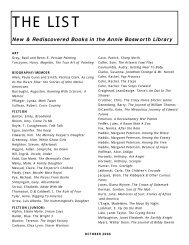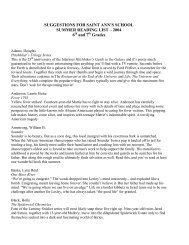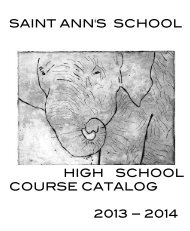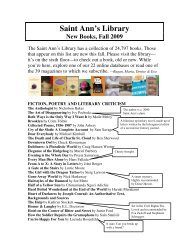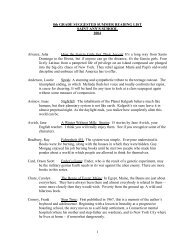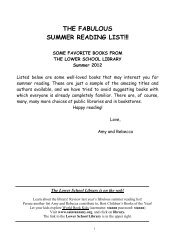Mathematical Journeys - Saint Ann's School
Mathematical Journeys - Saint Ann's School
Mathematical Journeys - Saint Ann's School
Create successful ePaper yourself
Turn your PDF publications into a flip-book with our unique Google optimized e-Paper software.
39 <br />
LINEAR ALGEBRA AND MULTIVARIABLE CALCULUS<br />
THEO MCKENZIE<br />
€<br />
This year for my independent math research I explored the fields of linear<br />
algebra and multivariable calculus. These two subjects in mathematics are both highly<br />
applicable and are usually learnt in the first year of college. Linear algebra is the study<br />
of linear spaces, i.e. spaces defined by vectors. Multivariable calculus is used to<br />
describe and analyze equations defined by more than one parameter.<br />
After learning basic rules of linear equations I applied this to some simple<br />
problems. One of the first problems that I did was the examination at a methane<br />
molecule. In methane (CH 4 ) the electrons of hydrogen are attracted towards the<br />
carbon atom, giving each of the hydrogen atoms a positive charge. This makes them<br />
repel each other and go as far away as possible from each other. This creates a regular<br />
tetrahedron with the carbon atom in the center. The problem was to find the angle<br />
between two hydrogen atoms. This was doable because I could use an equality<br />
equation with the dot product and solved for the angle.<br />
Another problem to do with linear equations was finding the area of the face<br />
of a tetrahedron, i.e. a triangle. This turns out to be double the cross product of any of<br />
the two vectors compromising the triangle, considering that the cross product by<br />
definition is the magnitude of two vectors multiplied by the sine of the angles between<br />
them. This works out to the base of a triangle multiplied by the height, which when<br />
divided by two is the area of a triangle.<br />
I then looked at matrices and their function in linear spaces. Various matrices<br />
have interesting properties, such as a matrix that rotates a vector a given angle in two<br />
dimensions, matrix inverses and orthogonal matrices. Matrices can also be used to<br />
solve linear equations. One problem that I did relating to this field was related to<br />
cooking. I was able to find out the nutritional value of various pastries from two given<br />
matrices in a small amount of time by putting the ingredients and the nutritional<br />
values of the ingredients into matrices, then multiplying them using the inner product.<br />
In terms of problems to do with multivariable calculus, I began by learning the<br />
basic rules of differentiation of functions of more than one variable. I had already<br />
made myself familiar with partial derivatives so most of my work was with the del in<br />
terms of the gradient, the divergent and the curl. I used these to describe many graphs,<br />
finding the maxima and minima and the tangent plane. Probably the problem that I<br />
spent the most time on this year was to find the region defined by<br />
0 < ∫∫ sin( x + y)dA


